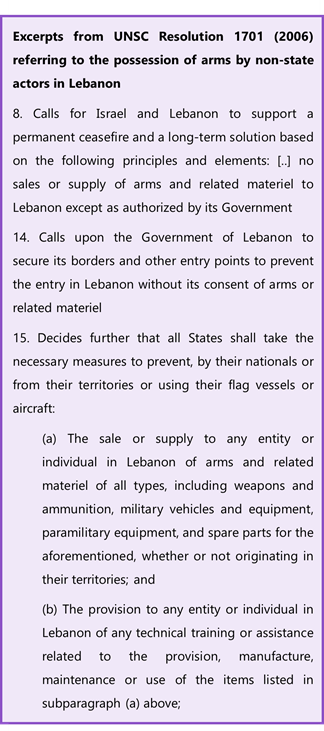Iran's Use of Syria to Advance Terror Activity
For Iran, control over Syrian territory represents a crucial land connection to Lebanese Hezbollah. Support for Hezbollah is one of Iran's major interests in the region, as the group is Iran's most powerful and successful proxy. Hezbollah's Secretary General, Hassan Nasrallah, stated recently that his organization is completely reliant on Iran for all of its financial expenses and its weapons.
Starting from the late 1980's-early 1990's, during Hafez Assad's reign as Syrian president, Damascus occasionally allowed Iran to transfer arms to Hezbollah, but only relatively small amounts of light weapons. After Hafez Assad's death in 2000, Bashar gradually drew closer to Iran, and by extension to Hezbollah. He approved the increased traffic of Iranian weapons through Syria. Deliveries included, for example, systems such as Scud and Fateh-110 surface-to-surface missiles, in addition to other advanced military capabilities.

With the outbreak of the Syrian conflict, Assad became more and more reliant on Iran and Hezbollah, and they grew more brazen in their arms transfers. Both Iran and Hezbollah have access to Syrian Army facilities and storehouses, and move freely between Syria and Lebanon. Thus Syria has become not only a bridge between Iran and Lebanon but rather the logistical and operational focal point of the Iranian-led "Axis of Resistance".

![]()
The main route of arms deliveries from Iranian military to Hezbollah in Lebanon runs through Syria. Both civilian and military flights from Iran fly to Damascus International airport. From the Iranian logistics center in Damascus Airport, the weapons are delivered on civilian-seeming trucks to the Lebanese border, where they are handed over to Hezbollah, and later dispersed throughout Lebanon. In recent years, those arms included advanced rockets, surface-to-surface missiles and anti-aircraft systems.
Some of these convoys in Syria carrying Hezbollah-bound weapons and sensitive equipment were intercepted, so Iran is progressing to a more ambitious endeavor – using the industrial infrastructure of Syria to produce rockets for Hezbollah. According to IDF intelligence, Iran has been helping Hezbollah to establish military facilities for the manufacture of advanced weaponry in Lebanon.
All of this is in direct violation of both the arms embargo over any entity or individual in Lebanon unless authorized by the Government of Lebanon and UNIFIL, imposed by UNSC resolution 1701 (2006) and the arms transfer embargo over Iran proscribed by UNSC resolution 2231 (2015).

Using the Golan Heights Front for Terror against Israel
Starting from 2013, Iranian, Syrian and Hezbollah officials have publicly expressed their desire to open a front against Israel in the Golan, and have even acted on this intent on numerous occasions. Hezbollah and Iranian operatives have carried out reconnaissance operations on and along the border, and have often instructed locals to do so on their behalf. Drones provide another source of intelligence on Israel, and have been spotted by Israeli forces on the border several times. The fight against Israel escalated to instances of rocket fire and IED explosions over the border.
In January 2015, an attack on a convoy of two vehicles in the northern Golan revealed the extent of Iranian and Hezbollah activity in the Golan. This attack led to the death of an Iranian General in the IRGC along with several Hezbollah operatives, including Jihad Mughniyeh, the son of Imad Mughniyeh (the former head of operations for the organization), who was involved in promoting terror activities.

